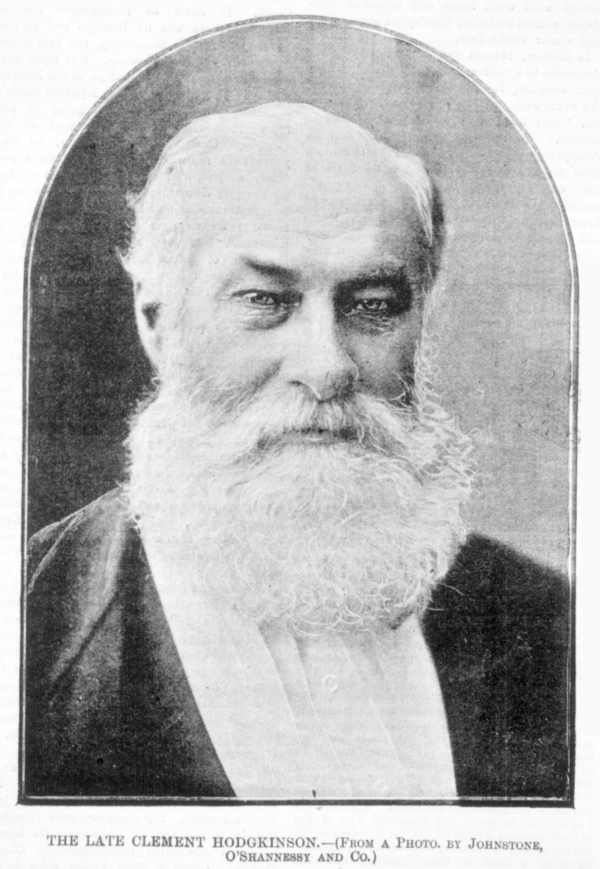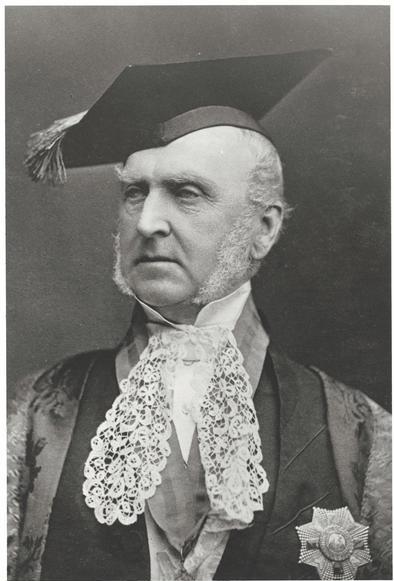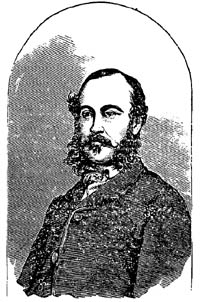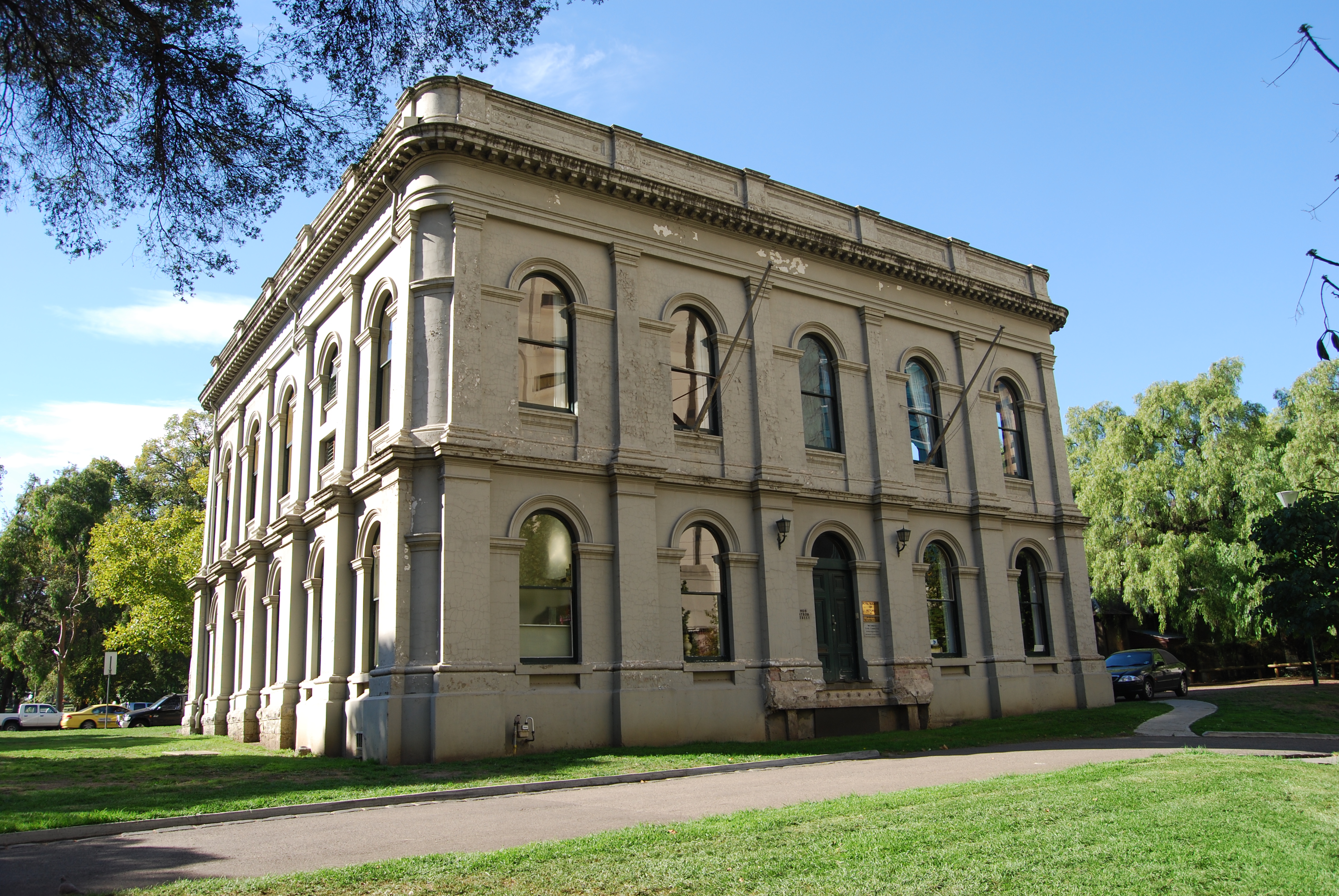|
Philosophical Institute Of Victoria
The Philosophical Institute of Victoria was a scientific institute functioned in Victoria, Australia during 19th century. It was founded in 1854 through the amalgamation of the Victorian Institute for the Advancement of Science and the Philosophical Society of Victoria. The first meeting of the newly amalgamated group was held on 10 July 1855 at the Museum of Natural History, chaired by a representative of the Victorian Institute, Dr J. Maund. According to the amalgamation statement, 'the objects of the Philosophical Institute shall be the same as that of the Philosophical Society, and that the mode of operation of the new Institute shall be the same as that of the old Society'. The inaugural president was the Victorian Surveyor General Captain Andrew Clark. Papers read at the first meeting included: * 'On the physical character of the County of Heytesbury'. By Robert Scott. * 'On the favourable geological and chemical nature of the principal rocks and soils of Victoria, in referen ... [...More Info...] [...Related Items...] OR: [Wikipedia] [Google] [Baidu] |
Andrew Clarke (British Army Officer, Born 1824)
Lieutenant General Sir Andrew Clarke, (27 July 1824 – 29 March 1902) was a British soldier and governor, as well as a surveyor and politician in Australia.Betty Malone, Clarke, Sir Andrew (1824–1902), ''Australian Dictionary of Biography'', Vol.3, MUP, 1969, pp 409–411. Background and education Born in Southsea, Hampshire, Clarke was the eldest of the four sons of Lieutenant-Colonel Sir Andrew Clarke, the Governor of Western Australia (1793–1847). Clarke's early years were spent in India with his parents. He was later brought up by his paternal grandfather and two uncles, one of whom was the father of Marcus Clarke, at the family home of Belmont, near Lifford, Ireland. He was educated at The King's School, Canterbury, and at Portora Royal School at Enniskillen, Ireland. At 16 he entered the Royal Military Academy, Woolwich, where one of his teachers was Michael Faraday. Career Graduating in 1844, Clarke was commissioned a 2nd Lieutenant in the Royal Engineers and aft ... [...More Info...] [...Related Items...] OR: [Wikipedia] [Google] [Baidu] |
Victoria (Australia)
Victoria is a state in southeastern Australia. It is the second-smallest state with a land area of , the second most populated state (after New South Wales) with a population of over 6.5 million, and the most densely populated state in Australia (28 per km2). Victoria is bordered by New South Wales to the north and South Australia to the west, and is bounded by the Bass Strait to the south (with the exception of a small land border with Tasmania located along Boundary Islet), the Great Australian Bight portion of the Southern Ocean to the southwest, and the Tasman Sea (a marginal sea of the South Pacific Ocean) to the southeast. The state encompasses a range of climates and geographical features from its temperate coastal and central regions to the Victorian Alps in the northeast and the semi-arid north-west. The majority of the Victorian population is concentrated in the central-south area surrounding Port Phillip Bay, and in particular within the metropolit ... [...More Info...] [...Related Items...] OR: [Wikipedia] [Google] [Baidu] |
Clement Hodgkinson
Clement Hodgkinson (1818 – 5 September 1893) was a notable English naturalist, explorer and surveyor of Australia. He was Victorian Assistant Commissioner of Crown Lands and Survey from 1861 to 1874. Exploration in New South Wales Qualified as a civil engineer, Hodgkinson left England in 1839 intending to become a pastoralist.Wright, R., (2002), ‘Hodgkinson, Clement, in R. Aitken and M. Looker (eds), ''Oxford Companion to Australian Gardens'', South Melbourne, Oxford University Press, p. 306. After his arrival, he bought into a cattle station near Kempsey, north of Sydney. A year later, the New South Wales colonial government hired Hodgkinson to survey and explore the northeastern areas of New South Wales as far as Moreton Bay. In March 1841 he explored the upper reaches of the Nambucca and Bellinger rivers, becoming in the process the first European to make contact with the local Aborigines there. He then followed the Macleay, Clarence, Hastings, Richmond and Tweed riv ... [...More Info...] [...Related Items...] OR: [Wikipedia] [Google] [Baidu] |
Redmond Barry
Sir Redmond Barry, (7 June 181323 November 1880), was a colonial judge in Victoria, Australia of Anglo-Irish origins. Barry was the inaugural Chancellor of the University of Melbourne, serving from 1853 until his death in 1880. He is arguably best known for having sentenced Ned Kelly to death. Early life Barry was the third son of Major-General Henry Green Barry, of Ballyclogh, Kilworth, County Cork, Ireland, and his wife Phoebe Drought, daughter of John Armstrong Drought and Letita Head. Barry had five brothers and six sisters and was educated at a military school, Hall Place, near Bexley, Kent. Returning to Ireland in 1829, he was unable to obtain a military commission so began his own further education. Following his own classics programme, translating classical authors into English verse, reading old and new writers, he gained a working knowledge of nearly every subject. In 1832, he entered Trinity College Dublin, graduated in 1835 with the usual Bachelor of Arts degre ... [...More Info...] [...Related Items...] OR: [Wikipedia] [Google] [Baidu] |
Ferdinand Von Mueller
Baron Sir Ferdinand Jacob Heinrich von Mueller, (german: Müller; 30 June 1825 – 10 October 1896) was a German-Australian physician, geographer, and most notably, a botanist. He was appointed government botanist for the then colony of Victoria (Australia) by Governor Charles La Trobe in 1853, and later director of the Royal Botanic Gardens, Melbourne. He also founded the National Herbarium of Victoria. He named many Australian plants. Early life Mueller was born at Rostock, in the Grand Duchy of Mecklenburg-Schwerin. After the early death of his parents, Frederick and Louisa, his grandparents gave him a good education in Tönning, Schleswig. Apprenticed to a chemist at the age of 15, he passed his pharmaceutical examinations and studied botany under Professor Ernst Ferdinand Nolte (1791–1875) at Kiel University. In 1847, he received his degree of Doctor of Philosophy from Kiel for a thesis on the plants of the southern regions of Schleswig. Mueller's sister Bertha had be ... [...More Info...] [...Related Items...] OR: [Wikipedia] [Google] [Baidu] |
Royal Society Of Victoria
The Royal Society of Victoria (RSV) is the oldest scientific society in the state of Victoria in Australia. Foundation In 1854 two organisations formed with similar aims and membership, these being ''The Philosophical Society of Victoria'' (founded 15 June, 1854, inaugural president Andrew Clarke) and ''The Victorian Institute for the Advancement of Science'' (founded 12 August, 1854, inaugural president Justice Sir Redmond Barry). These two merged in July 1855 to form the Philosophical Institute of Victoria, with Clarke as the inaugural president. The Philosophical Institute received Royal Charter in 1859, and the first president of the freshly renamed Royal Society of Victoria was Ferdinand von Mueller (later Baron Sir Ferdinand von Mueller), then Victoria's Government Botanist. In 1860 the RSV organised the ill-fated Burke and Wills expedition under the Presidency of Victorian Governor Sir Henry Barkly. Activities The Society has played an important role in the life of Mel ... [...More Info...] [...Related Items...] OR: [Wikipedia] [Google] [Baidu] |
Godfrey Howitt
Godfrey Howitt (8 October 1800 – 4 December 1873), entomologist, was born in Heanor in Derbyshire to Thomas Howitt. Thomas had farmed a few acres of land at Heanor and joined the Society of Friends on his marriage with Phoebe Tantum, a member of the same society, with whom he acquired a considerable fortune. Godfrey was educated at Mansfield and tutored by his brother William before graduating from Edinburgh University Medical School with an MD in 1830. He married Phoebe Bakewell the following year, on 6 April 1831, at the Friends' Meeting House in Castle Donington. He practised medicine in Leicester and in Nottingham was honorary physician at both the City Infirmary and the General Hospital. Life in Australia In 1839, he migrated to improve the health of his eldest child, John Henry. Howitt and his family, a nephew and his wife's brothers, arriving at Port Phillip on the Lord Goderich in April 1840. Howitt erected a prefabricated wooden house he had brought with him and short ... [...More Info...] [...Related Items...] OR: [Wikipedia] [Google] [Baidu] |
Robert Brough Smyth
Robert Brough Smyth (1830 – 8 October 1889)Michael Hoare,, ''Australian Dictionary of Biography'', Vol. 6, MUP, 1976, pp 161–163. Retrieved 3 February 2010 was an Australian geologist, author and social commentator. Life Smyth was born in Wallsend, Northumberland, England, the son of Edward Smyth, a mining engineer, and his wife Ann, ''née'' Brough. Smyth was educated at a school at Whickham, afterwards studied geology, chemistry and natural science. In 1846 Smyth worked at the Derwent Iron Works and then in 1851 was employed as a clerk at Consett Iron Works. Smyth arrived in the colony of Victoria on 14 November 1852 and was for a short period on the goldfields before entering the Victorian survey department as a draftsman under the surveyor-general, Andrew Clarke. In 1854 Smyth was placed in charge of the meteorological observations, and in 1860 became secretary for the Department of Mines at the height of the Australian gold rushes. Smyth published ''The Prospector's H ... [...More Info...] [...Related Items...] OR: [Wikipedia] [Google] [Baidu] |
John Macadam
The Honorable Dr John Macadam (29 May 1827 – 2 September 1865), was a Scottish-Australian chemist, medical teacher, Australian politician and cabinet minister, and honorary secretary of the Burke and Wills expedition. The genus ''Macadamia'' (macadamia nut) was named after him in 1857. He died at sea, on a voyage from Australia to New Zealand, aged 38. Early life John Macadam was born at Northbank, Glasgow, Scotland, on 29 May 1827, the son of William Macadam (1783-1853) and Helen, née Stevenson (1803-1857). His father was a Glasgow businessman, who owned a spinning and textile printing works in Kilmarnock, and was a burgess and a bailie (magistrate) of Glasgow. His fellow industrialists and he in the craft had developed, using chemistry, the processes for the large-scale industrial printing of fabrics for which these plants in the area became known. John Macadam was privately educated in Glasgow; he studied chemistry at the Andersonian University (now the University of S ... [...More Info...] [...Related Items...] OR: [Wikipedia] [Google] [Baidu] |
William Stawell
Sir William Foster Stawell KCMG (27 June 181512 March 1889) was a British colonial statesman and a Chief Justice of the Supreme Court of Victoria, Australia. Stawell was the first Attorney-General of Victoria, serving from 1851 to 1856 as an appointed official sitting in the Victorian Legislative Council, and from 1856 until 1857, as an elected politician, representing Melbourne. Early life Stawell was born in Old Court, County Cork, Ireland the second son of ten children of Jonas Stawell, and his wife Anna, second daughter of the Right Reverend William Foster, bishop of Clogher. Stawell was educated at Trinity College, Dublin, studied law at the King's Inns, Dublin, and at Lincoln's Inn, and was called to the Irish bar in 1839. Stawell travelled in Europe with his friends Redmond Barry and James Moore. He practised law in Ireland until 1842 when he decided to emigrate to Australia. Australia Stawell was admitted to the Port Phillip District bar in 1843. He engaged extensiv ... [...More Info...] [...Related Items...] OR: [Wikipedia] [Google] [Baidu] |
Surveyor General Of Victoria
The Surveyor General of Victoria is the person nominally responsible for government surveying in Victoria, Australia. The original duties for the Surveyor General was to measure and determine land grants for settlers in Victoria. The position was created at the time Victoria became a separate colony in 1851 (see History of Victoria This article describes the history of the Australian colony and state of Victoria. Before British colonisation of Australia, many Aboriginal peoples lived in the area now known as Victoria. A couple of years after the first Europeans settled t ...). The Surveyor-General of Victoria is the primary government authority on surveying and the cadastre (land property boundaries and tenure). The Surveying Act 2004, Act 47/2004, Part 6, specifies the appointment, suspension and functions of the Surveyor-General. Note that the act spells "Surveyor-General" with hyphen, which is the conventional spelling. List of Surveyors General of Victoria References {{ ... [...More Info...] [...Related Items...] OR: [Wikipedia] [Google] [Baidu] |
1854 Establishments In Australia
Events January–March * January 4 – The McDonald Islands are discovered by Captain William McDonald aboard the ''Samarang''. * January 6 – The fictional detective Sherlock Holmes is perhaps born. * January 9 – The Teutonia Männerchor in Pittsburgh, U.S.A. is founded to promote German culture. * January 20 – The North Carolina General Assembly in the United States charters the Atlantic and North Carolina Railroad, to run from Goldsboro through New Bern, to the newly created seaport of Morehead City, near Beaufort. * January 21 – The iron clipper runs aground off the east coast of Ireland, on her maiden voyage out of Liverpool, bound for Australia, with the loss of at least 300 out of 650 on board. * February 11 – Major streets are lit by coal gas for the first time by the Pacific Gas and Electric Company, San Francisco Gas Company; 86 such lamps are turned on this evening in San Francisco, California. * February 13 – Mexican tro ... [...More Info...] [...Related Items...] OR: [Wikipedia] [Google] [Baidu] |







